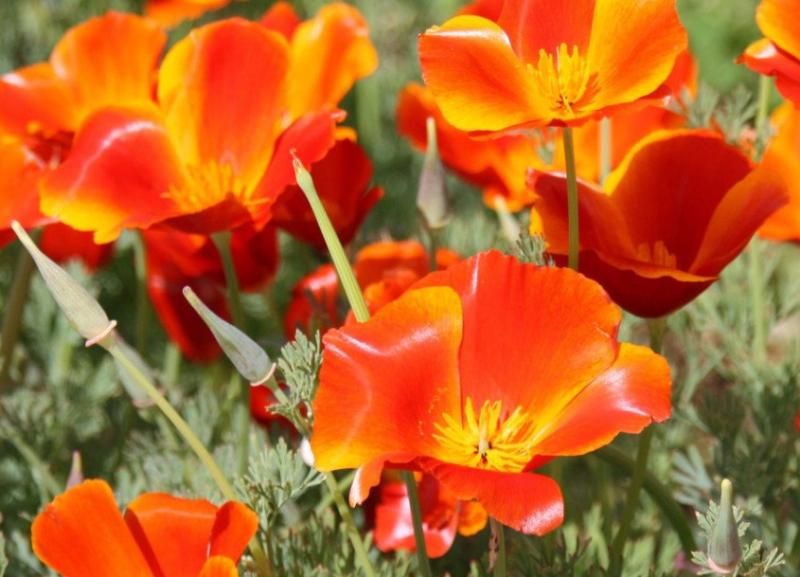Sometimes we play with English just for fun. The rather staid term reduplication is really repeating parts of words to form new words, such as hanky-panky and sing-song. In the garden, some flowers will sprout willy-nilly all over the place.
These flowers were never planted by gardeners, but planted by the flowers themselves. Called self-seeding flowers, they are often mistaken for perennials when, in fact, they are simply the children or grandchildren of plants you grow as annuals. Whereas perennials live several years, these self-seeding annuals are just scattering seeds to form new plants.
Annual flowers bloom abundantly throughout the growing season, and best of all, many annual flowers will go to seed and sprout all by themselves. These self-sowing flowers often come back to the garden year after year as if by magic, or hocus-pocus. Sometimes called "volunteers," they will pop up unexpectedly far from the original plantings.
The trick is to stop cutting off dead flowers and instead let them go to seed. Even if you usually cut out dead blossoms to encourage more flowering, you can stop around late summer and let the seeds develop and fully ripen. The plant does the rest, and it will scatter its own seeds as the seedpods mature and finally burst open like riff-raff.
Some of the best self-seeding flowers are Alyssum (Lobularia maritima), California poppy (Eschscholzia californica), Bachelor Buttons or Cornflower (Centaurea cyanus), Calendula (Calendula officinalis), Coreopsis (Coreopsis spp), Nasturtium (Tropaeolum majus), Breadseed poppy (Papaver somniferum), Forget-me-not (Myosotis scorpioides), Rose campion (Lychnis coronaria) and Sunflower (Helianthus annuus).
To encourage self-seeding flowers, choose several healthy plants that are heavy flowering. Let these mother plants grow undisturbed until they go to seed. You can leave them right in the flowerbed. To be proactive, gather a few of the ripened seedpods and harvest the seeds. Scatter these seeds wherever you want new plants next year. Many wildflower growers simply wait for the entire bed to go to seed and mow them down, scattering the ripe seeds. Even though many or even most of the seeds will land where they can’t sprout, enough will survive and grow next year.
Self-seeding biennials such as Foxgloves (Digitalis purpurea) and Honesty (Lunaria annua) take two years before they bloom. These will germinate and grow during their first year, then go dormant during winter. The following spring, they will begin growing again and bloom.
Unwanted flowers might give you the heebie-jeebies, but they are a gift of free plants. You may even find that you have the happy dilemma of self-seeding flowers becoming a nuisance and popping up all over. Luckily, they are easy to transplant, or if need be, simply cut them down before they take over.
Nothing could be easier than flowers that self-seed, so let some of your flowers go to seed, and next year you just might have new ones scattered everywhere, willy-nilly. Okey-dokey?



















































